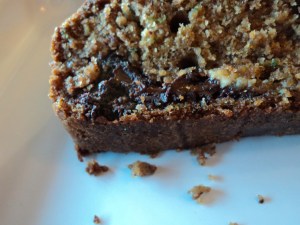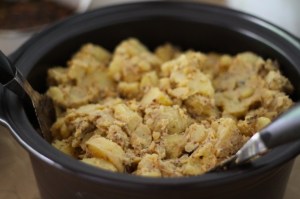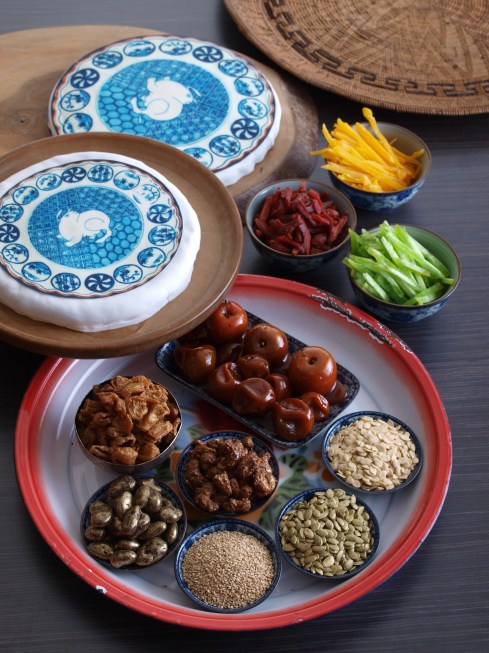 I could eat these figs all day. They are sensuous, sweet, sticky, salty, just a little burnt… totally delectable. I created them for the O’Gourmet Food Hall wine tasting, and they were paired with (and poached in) a Luberri 2009. The figs interacted extremely well with the wine, opening it up and accenting its unique properties.
I could eat these figs all day. They are sensuous, sweet, sticky, salty, just a little burnt… totally delectable. I created them for the O’Gourmet Food Hall wine tasting, and they were paired with (and poached in) a Luberri 2009. The figs interacted extremely well with the wine, opening it up and accenting its unique properties.
This is an easy dish to prepare, as long as you take your time, and are aware of the quality of ingredients. I used large, soft Turkish dried figs to start with, and slowly poached them in a bottle of red wine until they were succulent and very soft. I then drained them, and allowed them to cool for a few hours.
When they were ready, I split them sideways, and stuffed them with a dream of a cheese: one of the oldest French cheeses, Fourme d’Ambert. This blue is nutty, semi-hard and complex. Its manufacture dates back to Roman times, and it has an ageless grace and elegance. Baked stuffed in the figs, the cheese goes soft and slightly burnt around the edges, capturing and contrasting with the sticky sweetness of the figs. Fourme d’Ambert also has wine notes, so it also picks up and amplifies the flavours of the wine the figs have been poached in.
These gorgeous babies can be prepared a few hours in advance, and still be incredibly delicious. I must admit though, they are phenomenal straight out of the oven, with the Fourme d’Ambert bubbling away, and the scent of wine and cheese tantalising. I would serve a few with a bitter salad as a starter.
I made 20 figs for the wine tasting. Do adjust to your own crowd 😉
- 20 large, soft dried Turkish figs
- 1 bottle Luberri 2009 (or other complex red Spanish wine)
- 300 g Fourme d’Ambert (or other semi-hard blue cheese)
Place the figs in a large saucepan. Cover the figs with wine, and bring to the boil over medium high heat. As soon as the wine is boiling, turn the heat down to medium low, and poach / simmer the figs for at least 20 – 30 minutes or until very soft and yielding.
Drain the figs out of the wine (reserve the wine for the optional sauce below), and leave to cool for at least 2 – 3 hours, or even over night.
Preheat the oven to 180C (360 F). Line a large baking sheet with parchment paper.
Using a scissors or very sharp knife, split the figs in half side ways – though if you really want to do it top to tail, who am I to stop you?
Stuff about a tablespoon of cheese in the centre of each fig, and place the fig on the baking sheet, stem side up.
Once you have stuffed all the figs, bake in the hot oven for 5 – 10 minutes, until the cheese has melted, and is bubbly and starts to burn just around the edges. The wine soaked figs will also become shiny and sticky.
Serve hot, or at room temperature.
These figs will keep for 2 – 3 days, covered in the fridge. To serve, bring to room temperature.
For optional wine glaze:
If you are serving the figs as a starter, you could glaze them with a reduction of red wine.
- Remaining wine from poaching figs
- 1/2 tsp cinnamon
- 1 tbsp honey
- 1 tbsp balsamic
In a medium saucepan, combine the wine, cinnamon, honey and balsamic. Simmer over medium low heat until reduced to a thick shiny glaze. Taste and adjust seasoning. Drizzle over figs just before serving.










